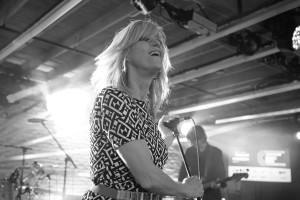How to Craft the Perfect Bio for all of Your Online Outlets
Have you ever Googled someone’s name or visited their personal website and come away still unclear about what they do or who they are? Have you ever looked at someone’s Twitter page, their website, then their LinkedIn page, and found that they are a consultant on one, and a blogger on another?
In the digital age, the importance and utility of a well-crafted bio—whether it appears on professional platforms or social ones—is undeniable. The problem, however, is that many people don’t realize the fact that with so much noise out there on the internet, failing to make your personal statement concise, to-the-point, and consistent everywhere you exist online and on paper can actually work against you.
When it comes to crafting personal bios, our number one rule is this: never make someone work to figure out who you are and what you do. When an employer, prospective client, partner or interested party looks you up, they should find a consistent message about who you are, no matter where they find you on the internet. No one should have to go on an online scavenger hunt to understand you.
Here are our top tips for creating an inspiring, concise, and impacting bio or personal statement:
Make Three Versions
If Buzzfeed has taught us anything, it’s that tailoring the length of content to your intended audience is key.
With that in mind, it’s useful to have three different lengths of your bio based on the platform you’re using:
-
-
- The first is a “micro” bio, which should be used on social media platforms such as Twitter and Instagram, and is no more than 25 words.
- The next, and probably most useful, is the “nut” bio. This is a more substantial written version of what you do, to be used in places like your LinkedIn page, your CV “objective statement,” and your Facebook professional page. This version is one that people can read quickly and instantly get a sense of you in about 150 words.
- The last version is the long read. This is perfect for when you’re appearing on a panel, being introduced as a speaker, or someone is writing an article about you. This should appear on your personal website and give the full breadth of your background and experience (similar to a narrative resumé), but should max out at about 350 words.
-
The tendency for many people who have achieved a lot or have many projects is to use the longest version of their bio wherever it’s possible. That’s a mistake. A short and concise summary is not only more powerful and memorable—it also heavily increases the chances that your reader will read the whole thing! However, it is sometimes appropriate to have both your nut bio and your long-read version on your personal website, as the former can be read quickly by people just perusing, while the latter is useful for people requiring more substantial information about you.
Follow a Narrative Arc, not a Chronological One
Journalism students are taught the importance of the “inverted triangle” when writing a story; that is, putting the most important information at the top of the story. Think of your bio the same way. A lot of people write their bio chronologically, starting with their education or training background. If you imagine that a reader might stop reading at any point—even after the first sentence!—you’ll see why this is problematic. Instead of going for a timeline, tell your story like an arc that covers the following elements in this order: Who you are/what you do right now, what you’ve done to get you there, and finally, where you’re going next.
Thinking about this arc is especially pertinent if you have a disparate career history. Let’s say you were a baker, then a PR person, now a writer. You either need to present a single narrative in which all those are cohesive—“Amy now combines her background as a pastry chef and a PR professional into her popular baking blog, which was named one of the top ten kitchen blogs by Gourmet Magazine”—or only include what’s most relevant to what you do now. A varied background can be great, but if you don’t stitch them together somehow, you’ll end up sounding like a dilettante.
Tailor the Voice for the Platform
Some networks and platforms are more professional, while others are more casual, so you should craft your bios accordingly. This doesn’t take a lot of work; you can essentially use the same words, just change the voice:
-
-
- “First person” (“I”) should be used for your CV/resume objective statement, for your LinkedIn summary, and for any social media platforms.
- “Third person” (“she”) should be used on your website, because it makes it easier for anyone who wants to copy and paste your bio to include in a guest post, promo material, etc.
-
Avoid Meaningless Words!
Another classic piece of writers’ advice is “show, don’t tell.”
With that in mind, when crafting your bio don’t use overused, undervalued, exaggerated words—like “dynamic,” “hard-working,” “passionate,” “energetic,” and “educated”—in place of real accomplishments and concrete acts. What normally happens when these kinds of words are used is that they end up being substitutes for real information/meaning. Instead of telling us that you’re “passionate,” tell us what you’re passionate about specifically. And don’t say “award-winning” without naming some awards, etc. In other words, always be concrete.
Be Mindful of Acronyms and Awards
Watch your acronyms! People who have worked at lots of places and organizations tend to overload their bios with official names and bodies. Limit yourself to a few and beware of making your bio read like alphabet soup.
Similarly, name your awards, but only the best ones. You shouldn’t be naming more than two or three awards/distinctions in your nut bio, especially if they are awards that aren’t particularly well known. It’s great to show you’ve been recognized, but limit to the most high profile few you’ve received.
In general, crafting a good bio is all about mastering the art of the self-edit. While it can be difficult to stomach leaving achievements out when you’ve worked so hard to reach them, the goal is to not overburden your time-and-attention-strapped reader, but instead leave them with only the most important information.
Written by: JosephineJane, personalized career consultants and self-branding strategists, @jj_careercardio
SXSW Presentation – Monday, March 16th 10:30-12:30
Personal PowerWorks: Power Your Personal Brand and Career
TAGS: SXSW
 Effective Communication
Effective Communication Women Making History
Women Making History Grants & Funding Sources
Grants & Funding Sources Interview Prep
Interview Prep Impactful Leadership
Impactful Leadership Dressing for Work
Dressing for Work Dressing for Your Style
Dressing for Your Style Interview Style Tips
Interview Style Tips Women's Stocking Stuffers
Women's Stocking Stuffers Gift the Busy Traveler
Gift the Busy Traveler Airport Layover Activities
Airport Layover Activities Traveling & Eating Healthy
Traveling & Eating Healthy Travel Like a Boss Lady
Travel Like a Boss Lady The Dual California Life
The Dual California Life Gifts for Thanksgiving
Gifts for Thanksgiving Summer Reading List
Summer Reading List Top Leisurely Reads
Top Leisurely Reads New Year, New Books
New Year, New Books Life Lessons from a Sitcom
Life Lessons from a Sitcom Oprah, Amy or Amal?
Oprah, Amy or Amal?














